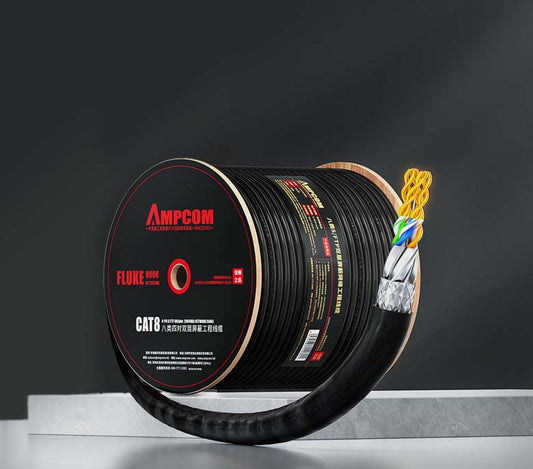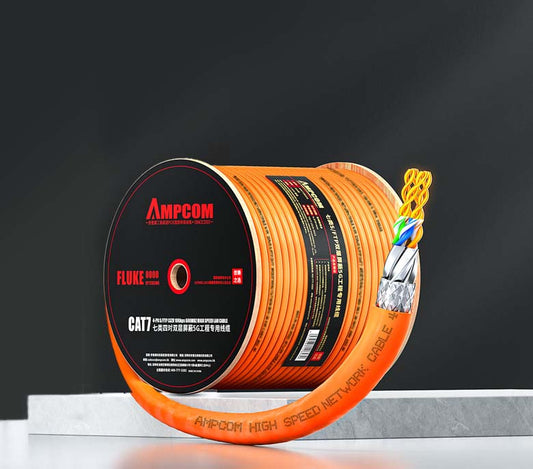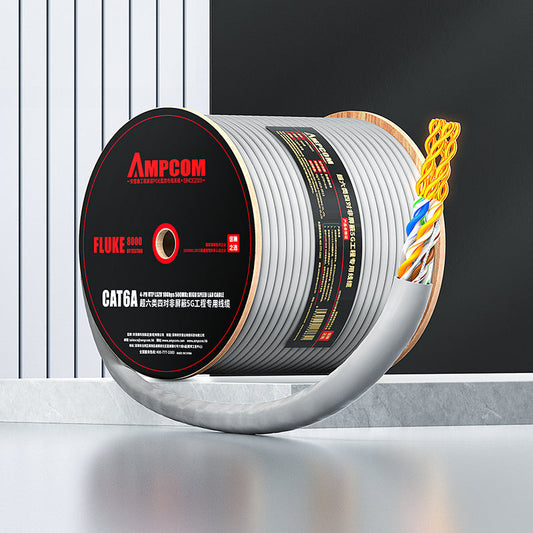Indoor vs Outdoor Patch Cords: UV, Moisture & IP-Rated Connectors
What’s the real difference between indoor and outdoor patch cords? This guide covers UV resistance, moisture protection, and IP-rated connectors, helping you choose the right cables for your network’s needs.
Last updated:
What Are Indoor vs Outdoor Patch Cords?
Indoor patch cords are designed for use in controlled environments like offices, homes, and data centers, where they are shielded from extreme weather. These cables typically have standard PVC jackets, which protect them from mechanical damage but don’t offer resistance to outdoor elements.
Outdoor patch cords, on the other hand, are built to endure external factors such as UV radiation, water, extreme temperatures, and physical wear. These cables usually come with stronger, more durable jackets made from UV-resistant materials like polyethylene, which ensures that they don’t degrade quickly under the sun’s rays. Additionally, outdoor cables are equipped with IP-rated connectors for enhanced protection against dust and water ingress, essential for maintaining network performance in harsh conditions.
Key Features of Outdoor Patch Cords
- UV Resistance: Outdoor Ethernet cables are exposed to sunlight, which can damage regular cables over time. UV-resistant outdoor cables are made with special coatings that prevent them from becoming brittle or cracked, ensuring they last longer when exposed to sunlight.
- Moisture Protection: Outdoor cables are often exposed to rain, humidity, and other environmental factors. These cables come with waterproof or moisture-resistant jackets to prevent water from penetrating and affecting the internal wiring.
- IP-Rated Connectors: The IP rating (Ingress Protection) of connectors tells you how well they resist dust and water. Outdoor Ethernet cables often feature IP67-rated connectors, which are sealed against dust and can handle submersion in water up to a certain depth, ensuring the cable maintains a reliable connection even in wet environments.
- Temperature Resistance: Outdoor patch cords are designed to withstand a wider range of temperatures compared to indoor cables. Whether it's the summer heat or winter cold, these cables maintain their performance in extreme conditions, preventing overheating or failure due to temperature shifts.
Indoor vs Outdoor Patch Cords: Key Differences
| Feature | Indoor Patch Cords | Outdoor Patch Cords |
|---|---|---|
| UV Protection | Not UV resistant | UV-resistant materials for sun exposure |
| Moisture Protection | Not waterproof | Waterproof jackets and connectors |
| Temperature Resistance | Designed for controlled environments | Built to withstand extreme outdoor temperatures |
| IP-Rated Connectors | Standard connectors | IP67-rated connectors for dust and water resistance |
Choosing the right patch cord is essential for ensuring the longevity and performance of your network. Outdoor cables must be able to withstand harsher conditions, while indoor cables are designed for more controlled environments.
When to Use Outdoor Ethernet Patch Cords
Outdoor Ethernet cables are a necessity in environments where exposure to the elements is expected. Consider using outdoor patch cords in the following scenarios:
- Outdoor Networks: Whether you’re setting up a Wi-Fi access point (AP) on a rooftop or connecting devices on the exterior of buildings, outdoor cables ensure you have reliable connections in exposed environments.
- Between Buildings or Across Outdoor Pathways: For connecting buildings or running cables across outdoor walkways, outdoor cables are a must to ensure safety and long-lasting performance.
- Outdoor Areas Prone to Harsh Weather: Areas like parking lots, sports fields, or farms where the network will be exposed to heavy rain or direct sunlight require outdoor-rated cables to maintain uninterrupted performance.
Outdoor cables are built to handle harsher environments and provide reliable network connectivity regardless of weather conditions.
How to Install Outdoor Patch Cords
When installing outdoor Ethernet patch cords, consider the following best practices:
- Proper Routing: Ensure cables are installed in a way that prevents them from being exposed to excessive heat, direct sunlight, or moisture. Use cable trays or conduits for additional protection.
- Connector Protection: Make sure that the connectors you use are IP-rated to withstand outdoor conditions. This will prevent water and dust from entering the connectors.
- Avoid Sharp Bends: Outdoor Ethernet cables should not be bent too sharply, as this can cause internal wire damage and lead to performance issues.
- Regular Inspections: Periodically check the outdoor cables for wear and tear, especially after heavy weather events such as storms or high winds.
Benefits of Using Outdoor Ethernet Patch Cords
Using high-quality outdoor Ethernet patch cords offers several benefits for your network:
- Durability: Outdoor cables are built with tough, weather-resistant materials to ensure long-lasting performance, even in the harshest environments.
- Reliability: With moisture protection, UV resistance, and high-temperature tolerance, these cables are less likely to degrade or fail under pressure, ensuring your network stays up and running.
- Low Maintenance: Thanks to their robust construction, outdoor Ethernet cables require less frequent repairs or replacements, reducing the total cost of ownership over time.
Next Steps
When upgrading your network to support outdoor environments, make sure to select high-quality outdoor Ethernet patch cords that are specifically designed to handle the conditions they’ll be exposed to. Start by surveying your environment, identifying potential risks, and choosing the correct cable to ensure seamless network connectivity.
FAQs
What is the difference between indoor and outdoor Ethernet cables?
Indoor Ethernet cables are intended for use in controlled environments, and they don’t provide protection from UV rays or moisture. Outdoor cables are designed with enhanced materials to resist these external elements and offer IP-rated connectors for additional protection.
Can I use outdoor cables inside?
Yes, outdoor Ethernet cables can be used indoors, but they might be overbuilt for the conditions. They are designed to be more robust and resistant to environmental factors, so using them indoors isn’t necessary unless additional protection is needed.
How do I choose the right outdoor Ethernet cable?
Consider the specific environmental factors, such as UV exposure, moisture, and temperature extremes. Ensure the cable has the right IP rating for your conditions and choose cables made from UV-resistant and waterproof materials.
Do I need IP-rated connectors for outdoor installations?
Yes, for outdoor installations, it is essential to use IP-rated connectors. These connectors are designed to resist dust and water ingress, ensuring reliable performance in challenging environments.



